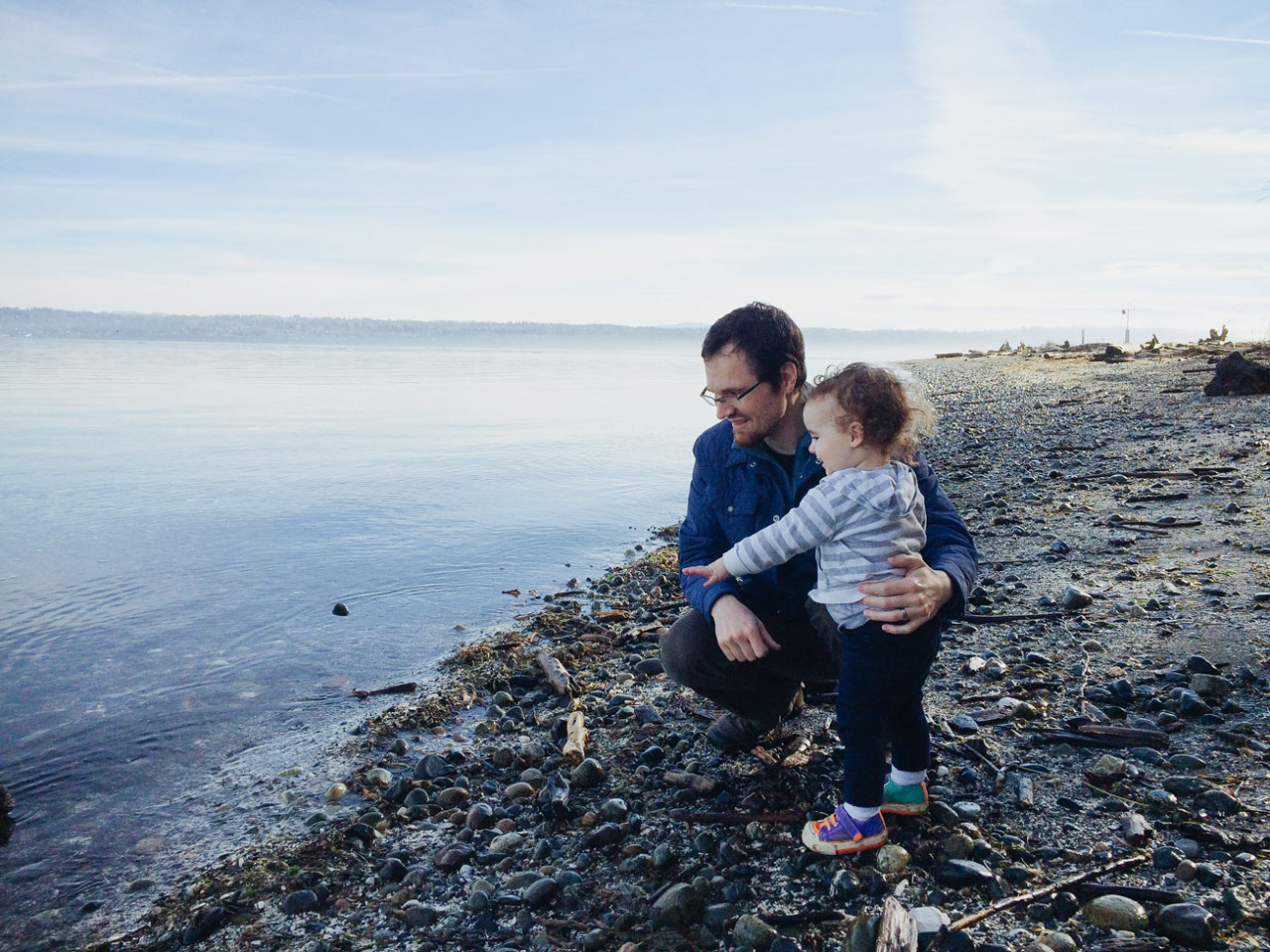Finding ways to engage city kids in conservation
Written and Photographed by Jamie Robertson, Spatial Analyst
“Outside, Daddy!” demands my toddler, Rowan. She wants to be out of the house exploring the community garden, following the hoot of an owl, or surveying the bay below our Tacoma neighborhood. I hear it multiple times a day and will never tire of it. She loves being outside – out adventuring – and I wish more than anything that she always will.
Being a conservation geographer, my career and my personal life meet at a crossroads of place and a respect for the natural things supporting us in this world. As a parent whose childhood was spent freely wandering many undeveloped acres of wooded hills, playing in healthy clear creeks, and dancing around May Poles in what wasn’t quite a hippy commune but let’s call it one anyway, I recognize “place” played as large a role in shaping my sense of discovery, wanderlust, and career as the people I shared those experiences with. And Rowan’s childhood place is certainly different from my own.
My wife Courtney and I recently moved back to Washington after each discovering its lures before we even knew each other. We are from North Carolina, though we met, fell in love, and had Rowan in Colorado. Our landing in Tacoma was a surprise, but our decision to raise Rowan in this state was absolutely deliberate. As it turns out, Tacoma is arguably the prettiest city in the Pacific Northwest. Mt. Rainier looms, old growth trees tower in vast Pt. Defiance Park, the waters of Tacoma Narrows and Commencement Bay surround half the city, downtown museums and theaters provide an impressive cultural and aesthetic appeal, and beautiful Craftsman, Victorian, and Tudor homes with lush gardens spread across the steep hillsides. Despite its rough history and typical urban issues, Tacoma is a wonderful place to raise our family.
But with city living – or maybe I should say modern living – comes a struggle. How do we allow Rowan enough freedoms to discover her own paths? What is truly necessary for her to grow respect for the natural world?
Granted, my daughter is still a toddler, but finding ways to engage city kids in conservation is a necessary strategy for all people concerned with natural or urban wellbeing. I believe tomorrow’s conservationists will increasingly be born from an urban experience which differs so vastly from the back-to-nature background of so many conservationists today. Indeed, this will be necessary as urbanism will only continue to influence and control the fates of the natural world that shaped me so profoundly and which will keep our social and economic systems running well into the future. Freedom to discover outside leads to respect for nature and is fundamental to engaging all children, I believe.
In my job, discovery means mapping out the world around us to help Washington understand the natural world and the factors impacting it so we can determine collectively how to address conservation issues. As a parent, discovery means finding ways to teach Rowan skills of self-reliance and to build a foundation of confidence she will need to adventure on her own. …But for now, I’ll be sure to keep a watchful eye when she sprints out the door.
Learn more about how you can share the love of the outdoors with your kids.



















